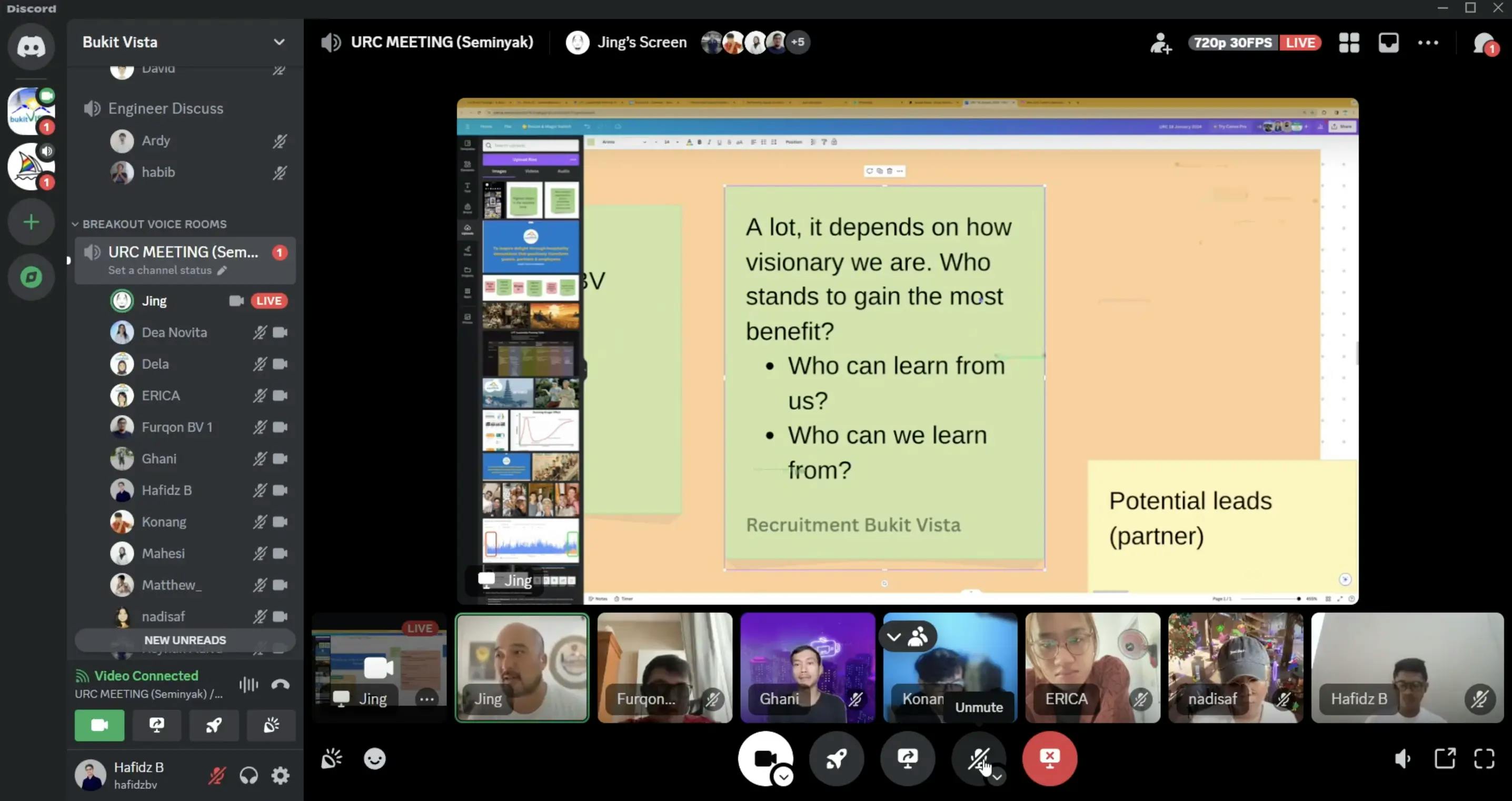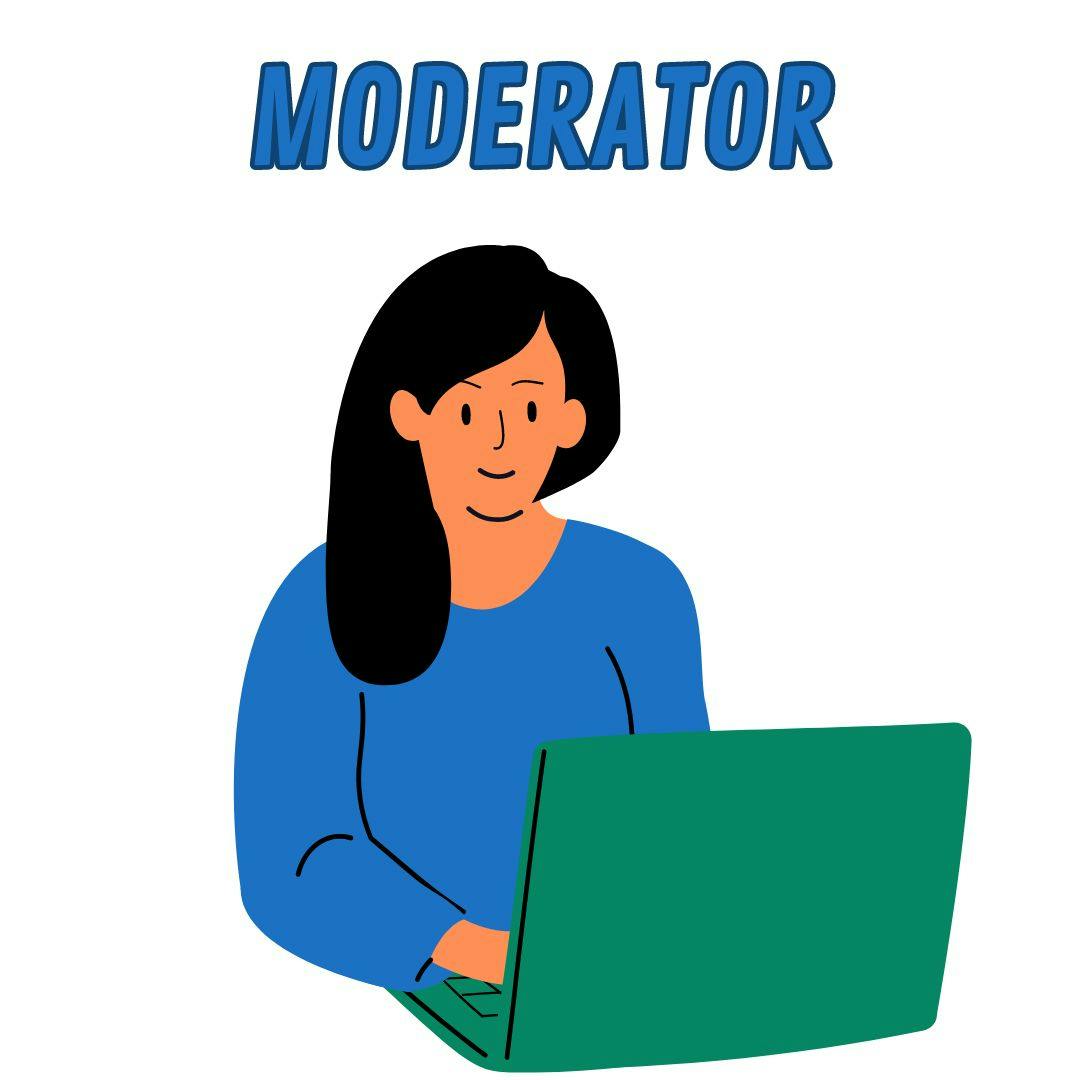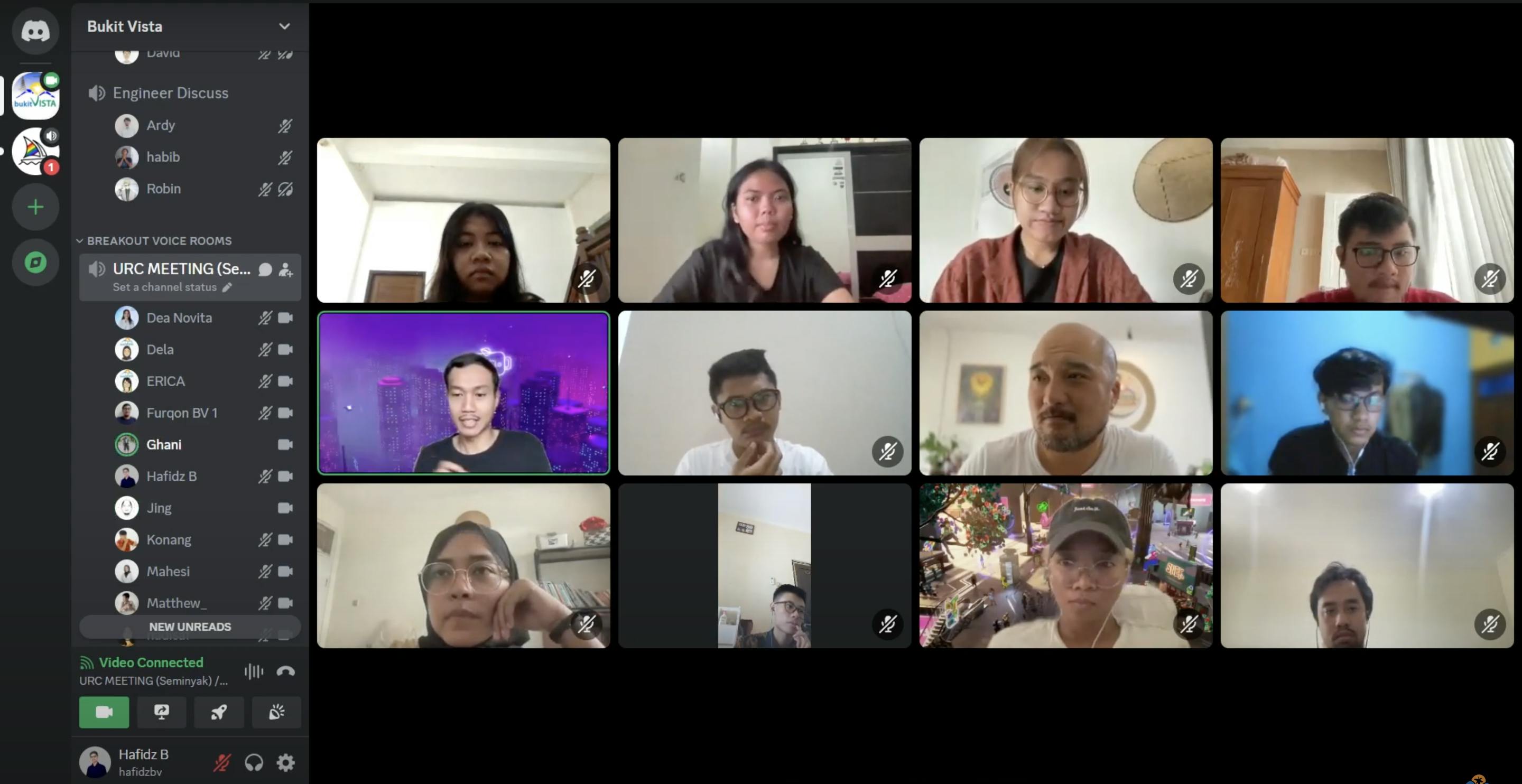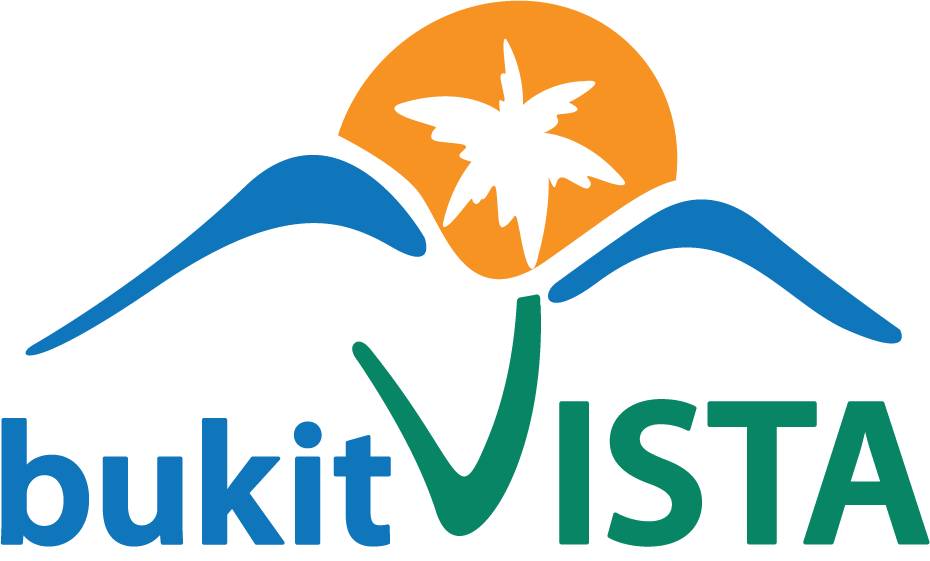On April 2, 2024, I, Dea Novita, transitioned from participant to moderator in a pivotal User Relationship Communication (URC) discussion in Bukit Vista. Since January 7th, my deep dive into URC’s collaborative approach among Marketing, PR, HR, and Business Development has underscored its critical role in not just reaching, but truly engaging with users.
So how is it to be a master of URC discussion? Join me in exploring how URC is redefining success by forging stronger user relationships in the digital marketplace.
The URC Model: Fostering Collaboration and Innovation
The concept of User Relationship Communication (URC) represents a structured approach where teams that interact directly with users, such as Marketing, Public Relations (PR), Human Resources (HR), and Business Development (BD), convene regularly to ensure alignment, brainstorm innovative ideas, and strategize on enhancing user engagement and satisfaction.
The URC model is built on the foundation of routine interactions among key internal stakeholders responsible for user communication. These interactions typically take place in dynamic, digital environments conducive to open discussion and creative thinking. A prime example of such an environment is the use of the Discord platform, particularly within Discord channels like Seminyak, where team members meet daily for discussions, brainstorming, and breakout sessions.

Objectives and Benefits
The primary goal of URC discussions is to foster a culture of collaboration and continuous improvement in how organizations communicate with their users. By bringing together diverse perspectives from different departments, URC helps in:
- Enhancing User Understanding: Regular interaction among teams enables a deeper understanding of user needs, preferences, and feedback, ensuring that strategies are user-centric.
- Promoting Agile Response: The dynamic nature of URC discussions allows for quick adaptation to user feedback and market changes, promoting agility in communication strategies.
- Stimulating Innovation: The collaborative environment encourages the sharing of ideas and strategies, fostering innovation in engaging users and addressing their concerns.
- Aligning Cross-Functional Teams: It ensures all teams are aligned with the organization’s objectives and messaging, leading to a cohesive user experience.
Roles In URC
In the context of User Relationship Communication (URC) sessions, the roles of Moderator and Participants are crucial for the structure and success of these discussions. Understanding these roles provides clarity on how URC sessions are organized and executed, ensuring that they are productive and aligned with the overarching goal of enhancing user engagement and satisfaction.


The Role of the Moderator
The Moderator plays a pivotal role in URC sessions, acting as the facilitator and guide for the discussions. Their responsibilities include:
- Topic Selection: The Moderator is responsible for selecting the topic of discussion. This involves identifying key areas that need attention, whether they be challenges facing the organization in user engagement, opportunities for innovation in communication strategies, or feedback from users that warrants a deeper discussion.
- Leading the Discussion: Once the topic is selected, the Moderator leads the discussion by framing the issue, presenting relevant information, and posing questions to the Participants. The aim is to stimulate thought, encourage participation, and guide the conversation in a direction that is productive and aligned with the session’s objectives.
- Time Management: A critical responsibility of the Moderator is to manage the time effectively. They ensure the discussion remains on track, covers all necessary points, and transitions smoothly into the closing remarks by the CEO & Co-Founder.
- Facilitating Engagement: The Moderator encourages participation from all attendees, ensuring a diverse range of perspectives are heard and considered. They play a key role in fostering an inclusive environment where Participants feel valued and empowered to share their ideas.
Tips to the Moderator
When you’re at the helm of a User Relationship Communication (URC) meeting, your goal is to facilitate a smooth and engaging conversation. Here’s how to keep things on track while ensuring everyone gets their turn in the spotlight:
Firstly, make it a point to encourage participation from all attendees. It’s your job to identify moments to bring in various team members. For instance, if the discussion veers towards content creation, invite someone like the content writer, who specializes in article writing, to contribute their insights.
Your role also involves providing thoughtful responses or follow-up questions to the points raised. This doesn’t just keep the conversation moving but also shows that you value and consider each perspective. Ensure your queries align with the main topic to maintain focus.
Before diving into the core discussion, lay down a clear context. A well-understood background will give everyone a common ground, making for a more productive session.
Lastly, use the initial few minutes of the meeting, often dedicated to administrative tasks like filling out sticky notes, as an opportunity to engage in light conversation. This warms up the group and fills any awkward silences, setting a comfortable tone for the rest of the meeting.
With these guidelines, you’ll be able to master the URC meetings that are not only efficient but also inclusive and thought-provoking.

The Participants
Participants are the attendees of the URC discussions apart from the Moderator. Their roles are characterized by the following:
- Active Engagement: Participants are expected to actively engage in the discussion, contributing ideas, feedback, and perspectives related to the meeting’s topic.
- Collaboration: They collaborate with other Participants and the Moderator, building on ideas and contributing to a holistic understanding of the user engagement strategies being discussed.
- Responsiveness: Participants should be responsive to the discussion points raised by the Moderator and other attendees, offering constructive contributions that drive the conversation forward.
Conclusion
The User Relationship Communication (URC) model is more than just a meeting format; it’s a catalyst for strategic alignment, innovation, and enhanced user engagement. It transcends traditional departmental silos to create a synergistic approach to understanding and responding to user needs. By leveraging the collective expertise of marketing, PR, HR, and BD teams, organizations employing the URC model are poised to navigate the complexities of user relations with dexterity and foresight.
If you are passionate about driving user engagement, valuing collaborative insights, and embracing a culture of continuous improvement, we invite you to be part of the URC conversation. Join us in our next URC session to experience firsthand the power of collaborative innovation and strategic alignment. Whether you’re a seasoned professional or a newcomer eager to make an impact, your voice can shape the future of how we communicate with our users.

